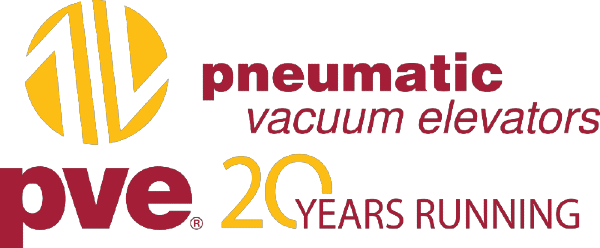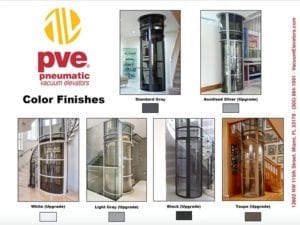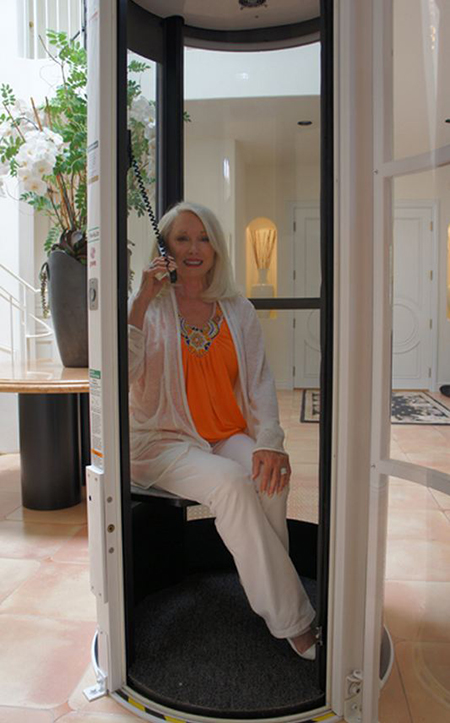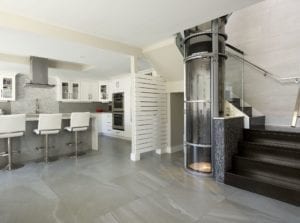With three models to choose from, ranging from a single passenger to a three passenger wheelchair accessible home elevator, there is a Vacuum Elevator that can accommodate your every need.
Available for Retro-fit and new construction projects, the Vacuum Elevator is a self-supporting, eco-friendly home elevator that does not require any pre-construction shaft, pit or machine room to operate. Available for through-floor and balcony mounted applications, these air-driven home elevators are the only ones of their kind that utilize this innovative technology. Resting on the existing ground floor, these plug & play residential elevators can be installed virtually anywhere inside the home in as little as 2-3 days.
Depending on the customers need, there are a number of upgrades and features made available for your Vacuum Elevator.
Color Options
There are 6 colored exterior finishes available for these Air-Driven residential elevators. These exterior color options can be added to the aluminum framing of the residential elevator and give prospective customers the option to match the residential elevator with the home interior design. With Standard Gray being our standard color option, available are White, Black, Taupe, Anodized Silver, and Light Gray.
See color chart below to view the options:
Split-Unit Option – Head Unit Remote Location
Another feature made available for all 3 models of our Air-Driven Home Elevators is our Split-Unit option. This feature allows you to remotely locate the Head Unit of the Vacuum Elevator, where the Vacuum system and elevator machinery is located, up to 30 linear feet away and reduces the working noises of the home elevator.
With the standard mount head unit mounted on-top, the top floor’s floor to ceiling height requires 107 inches. By remotely locating the head unit, the floor to ceiling height requirement on the top floor reduces to 96 inches making it more accessible for lower overhead installations. This Split-Unit can be stored in an adjacent closet, side-room or attic space. This option also reduces any noise generated by the Vacuum Elevator as the Head-Unit is where the Vacuum System is located.
Cabin Folding Seat (PVE37)
For our two-passenger PVE37 home elevator, a cabin folding seat is available to be added to your home elevator. This retractable folding seat is a great feature to add for anyone wishing to take a seat while enjoying their air-driven residential elevator.
Door Opening Configurations
Depending on the Air-Driven Home Elevator model, there are an array of options for door opening configurations. The most flexible model is the two-passenger PVE37 Home Elevator, which offers Same-side, Opposite-side and 90° door configurations. There are some limitations with the PVE37 90 degree option.
See door Opening chart below for all 3 models of these innovative residential elevators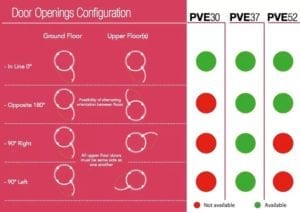
Earthquake Brackets
These Air-Driven residential elevators require no shaft, pit or machine room to operate and they simply rest on the existing ground floor. While all installations are secured at the upper landings, certain locations and areas are prone to Earthquakes and as a result, Pneumatic Vacuum Elevators offers consumers the option to add Earthquake brackets to the bottom of their home elevators. These brackets, which attach to the bottom of the home elevator and are bolted to the ground floor of the home, add additional stability and satisfy the requirements as needed in seismic zones.
Overview
With a variety of features to choose from, these Air-Driven Home Elevators are designed to accommodate your every need. For further information, visit our Information Request form and a representative will get back to you shortly!
